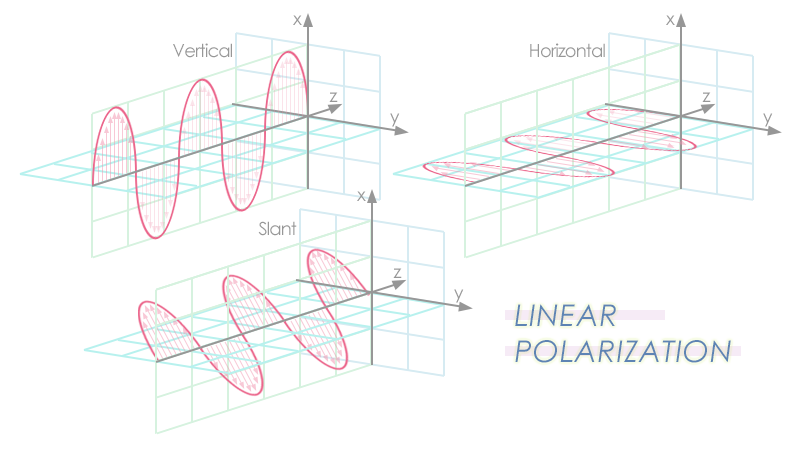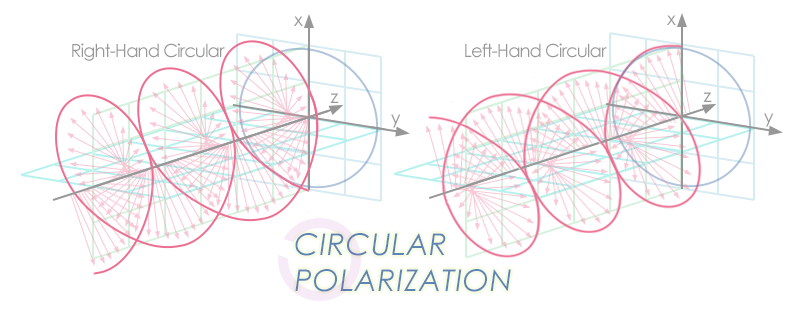Intro to Antenna Polarization
October 2020In an earlier post, we touched upon different antenna’s intrinsic characteristics, such as gain, radiation patterns, directivity and VSWR. In this post, we touch upon polarization and how it affects an antenna’s performance.
The polarization of an antenna is loosely defined as the direction of the electromagnetic fields produced by the antenna as energy radiates away from it. These directional fields determine the direction in which the energy moves away from or is received by an antenna.

Linear polarization is the most common polarization.
Vertical polarization refers to the oscillation of an antenna’s electrical field on the vertical plane, whereas horizontal polarization refers to the oscillation on the horizontal plane.
Slant polarization refers to an electrical field that oscillates at a 45-degree angle to a reference plane. JEM Engineering’s LPA-069, for example, is a handheld, direction finding, log periodic antenna that can tilt to a 45-degree angle to receive slant, horizontal, or vertically-polarized signals.

Circular polarization (CP) refers to a radio wave that rotates as the signal propagates. When it rotates to the right, the polarization is referred to as Right-Hand Circular Polarization (RHCP); when it rotates to the left, it’s referred to as Left-Hand Circular Polarization (LHCP). Many of JEM’s multi-band antenna products are circularly polarized. For example, the standard HSA-218 is RHCP, but JEM also makes an LHCP version of the antenna.

Not to be confused with circular polarization, elliptical polarization refers to an electrical field that is propagated in an elliptical helix. Similar to circular polarization, elliptical polarizaton can either be right-hand, or left-hand.
The way an antenna is mounted affects its polarization.
A straight dipole antenna will have different polarizations when mounted either horizontally or vertically. Thus, a horizontally polarized antenna will perform better when mounted near a ceiling, whereas a vertically polarized antenna will perform better when mounted near a side wall.
Omnidirectional antennas can be dual polarized.
Omnidirectional antennas, such as the JEM-0221A, radiate radio frequency energy in all directions perpendicular to the antenna’s axis in a doughnut-shaped pattern. Although omnidirectional antennas are usually vertically polarized, they can also be circularly polarized or dual polarized. Circular polarization helps mitigate the reflections that are common in omnidirectional antennas.
A circularly polarized omnidirectional antenna is insensitive to wave orientation. Thus, they provide particularly effective performance and gain. In receiving antennas, a dual polarized CP omnidirectional antenna offers optimal transfer of electromagnetic energy. Ideal for field-sensing and signal environment monitoring applications, the WSA-0520, is able to receive vertical, horizontal, RHCP and LHCP polarized signals equally.
Latest Posts

What are Genetic Antennas?
First appearing in the 1990s, genetic antennas, also known as “evolved antennas,” resemble intricately bent paperclips attached to a radio frequency connector.

The Many Forms of a Flight-Qualified Antenna
In order for an antenna to be qualified for mounting onto a non-stationary ground plane, it has to meet stricter vibration testing standards than it would for stationary mounting.

Remote Radiofrequency Testing
JEM Engineering offers all of our customers the added convenience of performing remote radiofrequency testing.

Loop Antennas: Design Overview
Loop antennas come in many forms, but their overarching distinction is that they are relatively simply constructed, yet very versatile.
